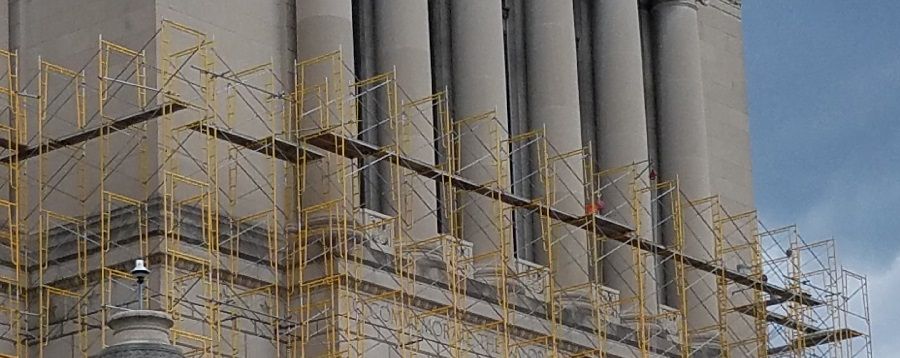
Safety Tip: Scaffolding from Bottom to Top

Scaffolding can be safer and more efficient than using a ladder on bigger jobs, but many workers die from scaffold related accidents. Planning ahead, Providing the proper equipment and training, as well as putting into practice the best safety measures can help to keep your workers safe and productive. There are many different types of scaffolds, but the two main categories they fall into are:
Grounded Scaffolding
Keeping safe on scaffolds is a process from the ground up. Scaffolding should be assembled under the direction and inspection of a competent person, and must be build with ladder access. Never climb up scaffolding support beams. To avoid falls, try not to allow debris or other materials to remain on the scaffold to minimize tripping hazards, and use safety netting to catch anything that falls. Fencing in the bottom of the scaffold can help to prevent falling materials from striking a worker below.
Wearing the proper fall protection can help to, as the name implies, protect a worker from falling. However, even with this in place it is still unsafe overreach and lean outside of the guardrails, which are necessary for any scaffolding operation.
Suspension Scaffolding
Suspension scaffolding is typically hung from the top or side of a building. Securely tightening the lashings until the scaffold does not sway is a good place to start. On top of this, any mechanical moving parts such as gears and rotors must be kept enclosed to prevent a jam. Unlike standing scaffolds, suspension scaffolds must be regularly serviced and inspected. As expected, proper guardrails, nets, and toeboards are a must.
Learn More:

